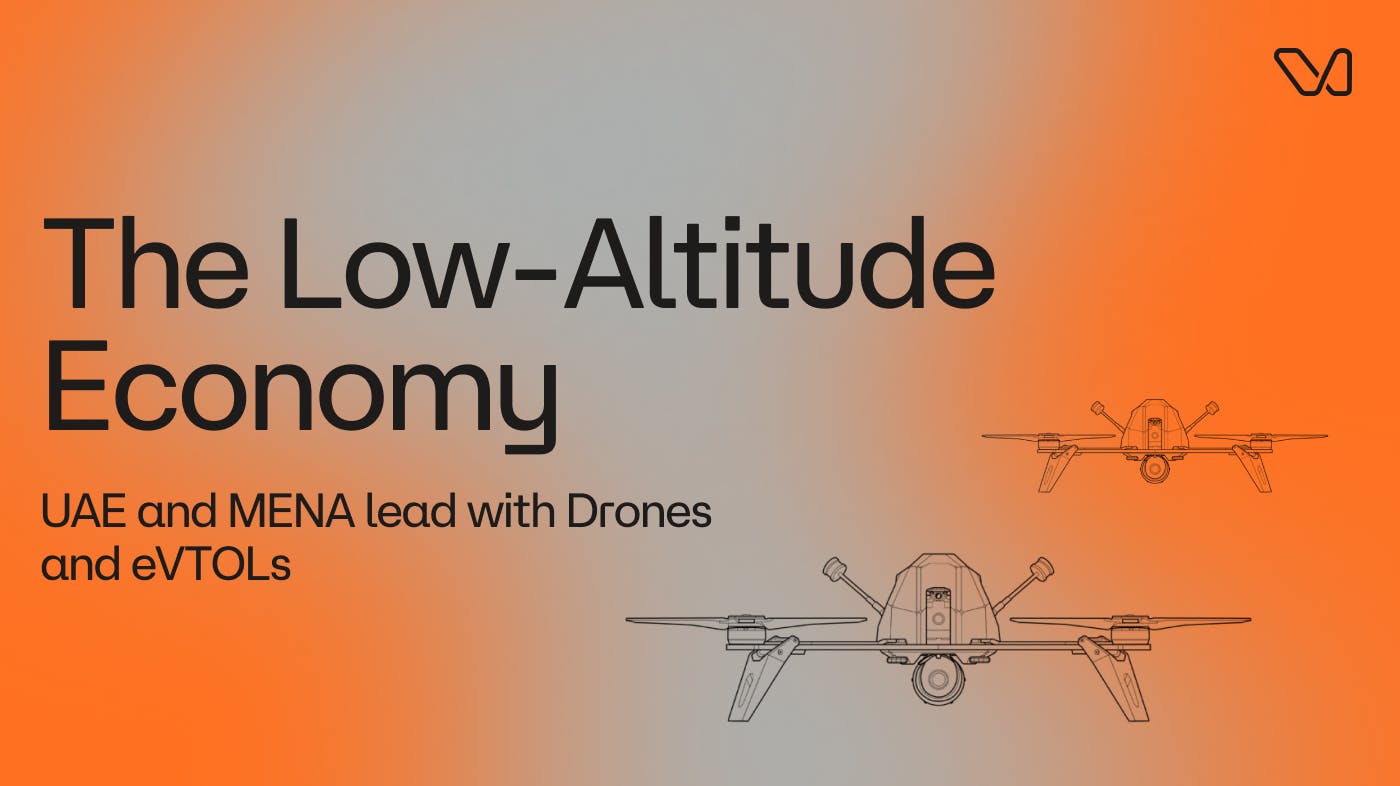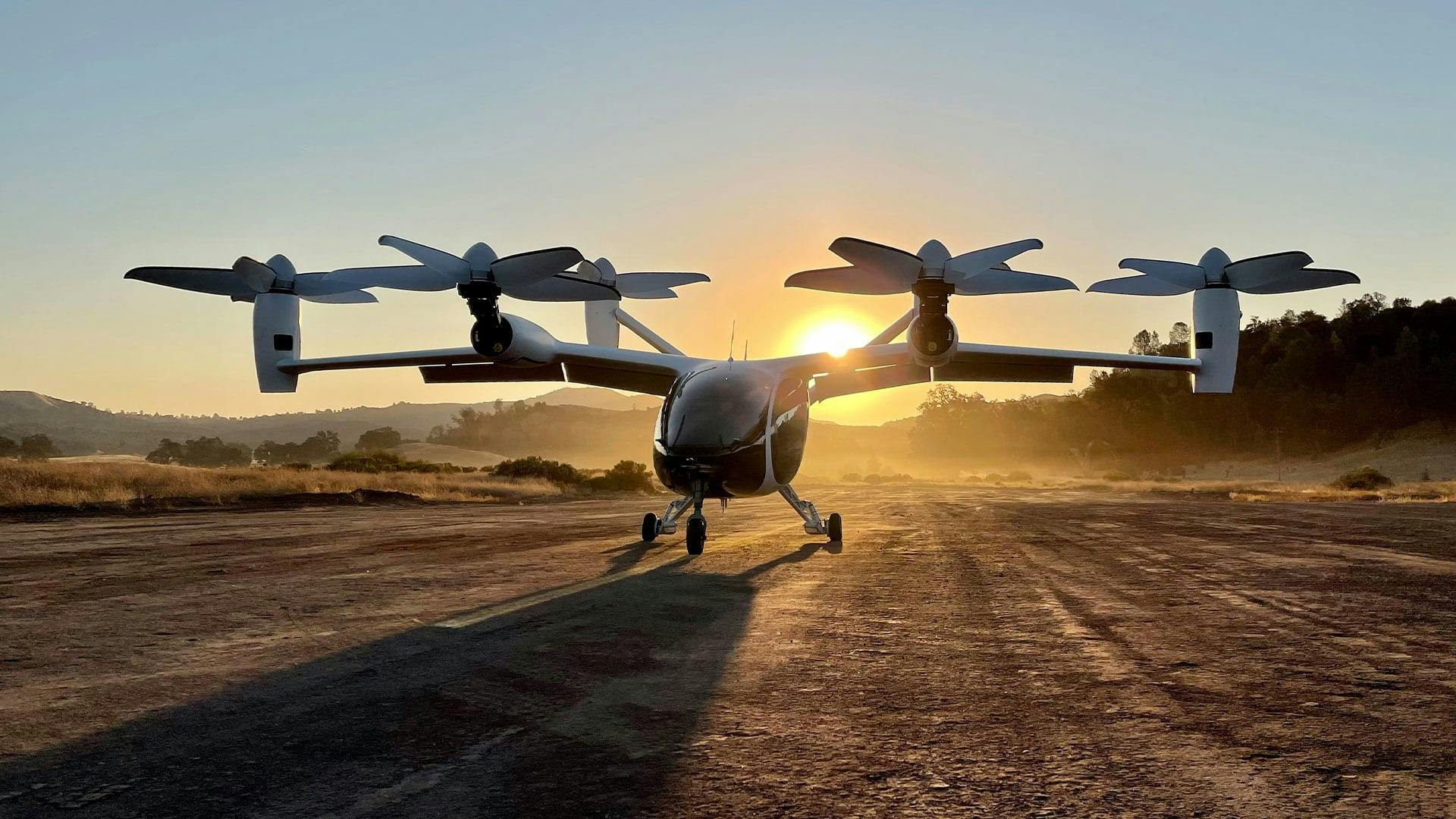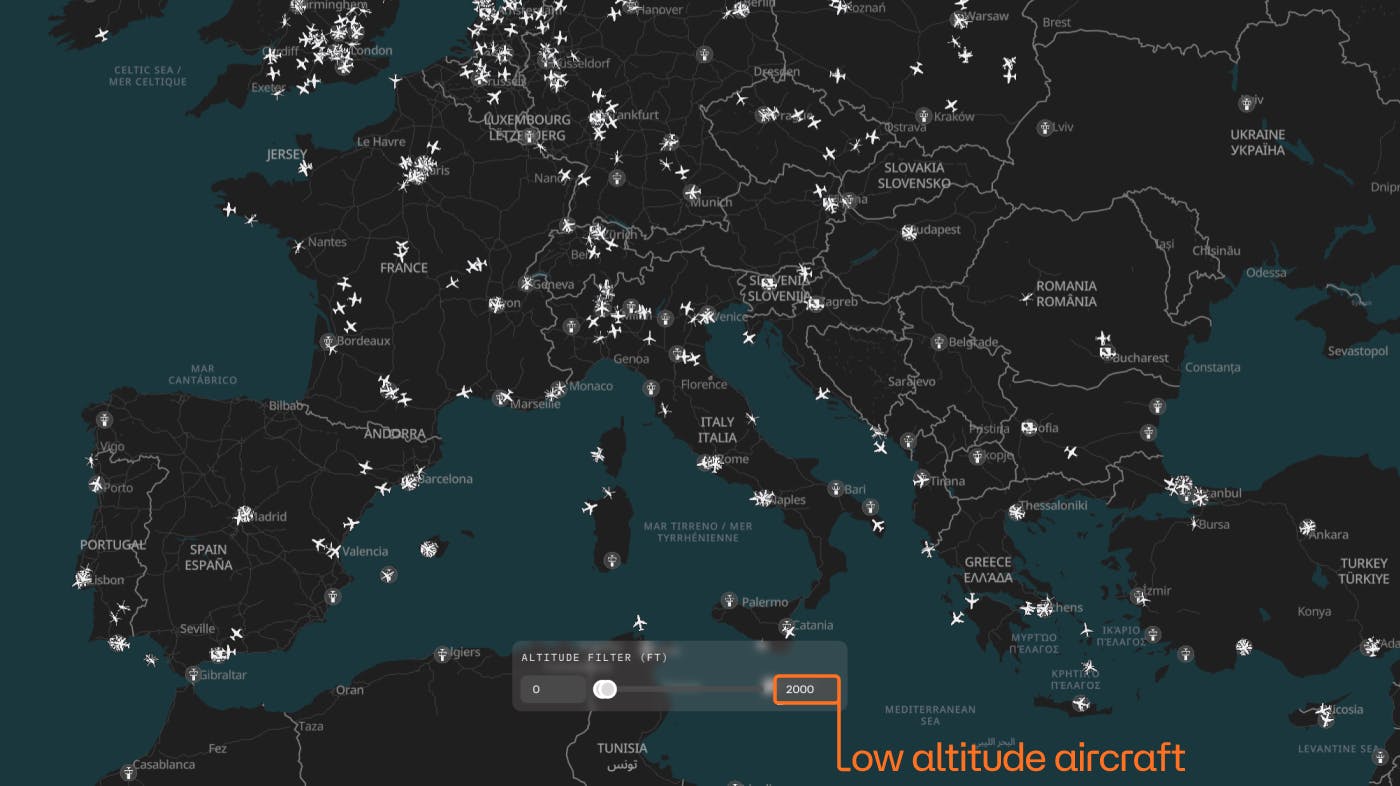The Low-Altitude Economy: UAE and MENA Lead with Drones and eVTOLs
Jeff Wilson
July 15, ‘25

The Low-Altitude Economy: UAE and MENA Lead with Drones and eVTOLs
The skies above cities are buzzing with potential. Drones, air taxis, and electric vertical takeoff and landing (eVTOL) aircraft are fueling the rise of the low-altitude economy, a sector transforming how people, goods, and information move. The global drone market is expected to hit $127 billion by 2030, with eVTOLs adding billions more. In the Gulf Cooperation Council (GCC), particularly the UAE and Saudi Arabia, bold investments and infrastructure are positioning the region as a global leader in advanced air mobility. But this aerial revolution hinges on more than just vehicles, it requires robust infrastructure and real-time data systems to ensure safety and scalability.
The Low-Altitude Economy Takes Off
The low-altitude economy operates in airspace up to 3,000 feet, potentially stretching up to 10,000 feet. Drones already handle tasks like delivery, surveillance, and agriculture, while eVTOLs and air taxis promise to slash travel times and emissions in crowded cities. A drive from Abu Dhabi to Dubai, typically 60-90 minutes, could soon take just 10-30 minutes by air.
The GCC is moving fast. In Dubai, a commercial vertiport near DXB airport is under construction, set to handle 42,000 landings and 170,000 passengers annually by 2026. In Saudi Arabia, Abdul Latif Jameel is partnering with Joby Aviation to distribute eVTOLs, signaling a push into short-haul electric flights. These efforts show the region’s commitment to weaving air mobility into its economic and urban fabric.
UAE: A Hub for Urban Aviation
Dubai is at the forefront, driven by ambitious goals like the Dubai Future Foundation’s plan for 25% of transport to be autonomous by 2030. Test flights by Joby Aviation and Archer in 2025 highlight progress, while EHang is exploring passenger drone deployments. Drone delivery is also thriving, with designated corridors supporting medical logistics and e-commerce. Kreeta Drone earned the UAE’s first commercial license for beyond-visual-line-of-sight deliveries, and Dronamics partnered with Aramex to use cargo drones for middle-mile and long-range logistics, backed by a new UAE manufacturing facility.
Dubai’s smart city infrastructure, integrated traffic systems, IoT networks, and centralized planning, makes it ideal for syncing air and ground transport, creating a seamless mobility ecosystem.

eVTOL, by Joby Aviation
MENA’s Broader Push
Beyond the UAE, the MENA region is investing heavily. Saudi Arabia’s NEOM project envisions eVTOLs as a core part of its Vision 2030 mobility plans. At the 2024 Future Aviation Forum in Riyadh, Joby signed agreements with Mukamalah Aviation for business travel and Abdul Latif Jameel for eVTOL distribution. EHang’s unmanned air taxi trial in Mecca for Hajj logistics shows the diverse applications of air mobility.
Qatar is exploring drones for rural connectivity and events, with Barzan Holdings developing unmanned systems. Oman is also stepping up through a partnership between LYNEports and AeroVecto to develop hybrid-electric eVTOLs, aligning with its Vision 2040 for sustainable transport. These efforts signal a region-wide push to integrate air mobility into economic and urban planning.
The Critical Role of Data
As airspace gets busier, real-time data becomes essential. Automatic Dependent Surveillance-Broadcast (ADS-B), originally for high-altitude aircraft, now supports low-altitude operations by providing live tracking for drones and eVTOLs. It powers vertiport scheduling, traffic management, and collision avoidance. Historical ADS-B data also informs long-term planning, helping authorities optimize drone corridors, developers pick vertiport sites, and operators map efficient routes.
This data-driven approach ties together the low-altitude economy’s core components: vehicles (drones, eVTOLs), infrastructure (vertiports, charging hubs), management systems (airspace planning platforms), and regulations. Without reliable, scalable data, safe operations at scale are impossible.
Economic and Urban Impact
The low-altitude economy is an economic driver, creating jobs for technicians, drone pilots, and data analysts. It boosts tourism with scenic air routes and fast airport transfers while revolutionizing logistics through drone deliveries. Urban planning is evolving too, with airspace access now a factor in real estate development.
Challenges and Solutions
Progress isn’t without hurdles. Safe airspace coordination requires real-time situational awareness, public trust demands transparency, and systems must withstand extreme weather like heat and dust. Open data standards and cross-sector partnerships between city planners, manufacturers, and data providers are critical to overcoming these challenges.
The Future Is in the Data
Data is the backbone of every flight path, vertiport, and delivery route. It must be real-time, accessible, and deep enough to support predictive planning. Systems like Wingbits’ ground-based ADS-B network are helping shift aviation from reactive to proactive, laying the groundwork for a future where air and ground transport work as one.
The MENA region’s skies are becoming a valuable economic layer. Success will depend not just on aircraft or infrastructure but on the clarity and agility of data. The region that masters this will lead the global race in the low-altitude economy, flying first and farthest.

Low-altitude aircraft captured by Wingbits, 15 July 2025

Head of Product and Commercial Services
Jeff Wilson is a specialist in aviation data solutions with deep expertise in ADS-B technology, global flight and surface tracking, and the broader ecosystem of multi-domain surveillance. With hands-on experience growing one of the more renowned flight tracking networks, he brings a rare blend of technical insight and commercial strategy. His passion, paired with a strategic mindset, fuels his mission to help organizations harness aviation data to improve efficiency, safety, and situational awareness.
Recommended articles
Wingbits and the UAE: Transforming Flight Tracking with Community Power
Yanal Hammouda
June 12, ‘25
